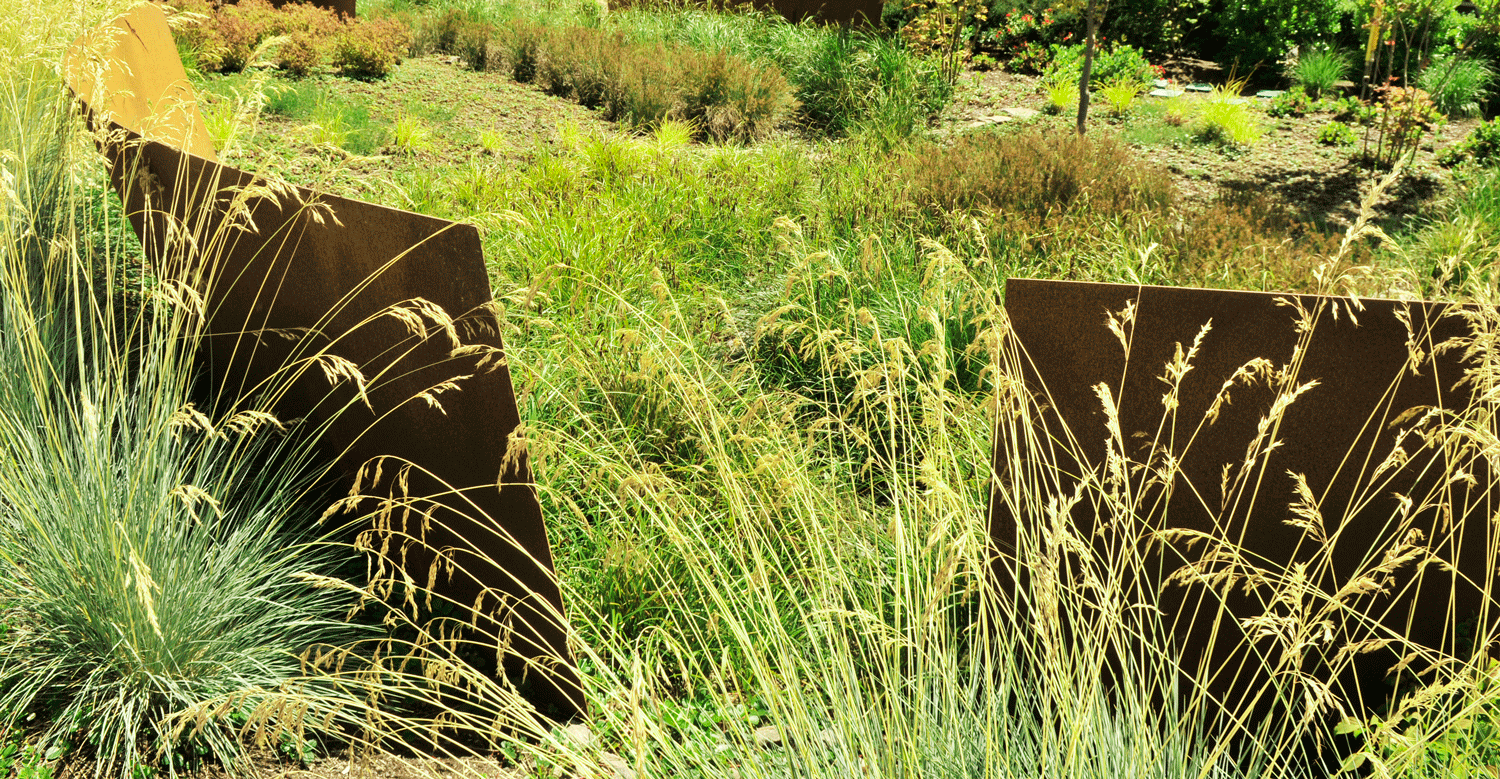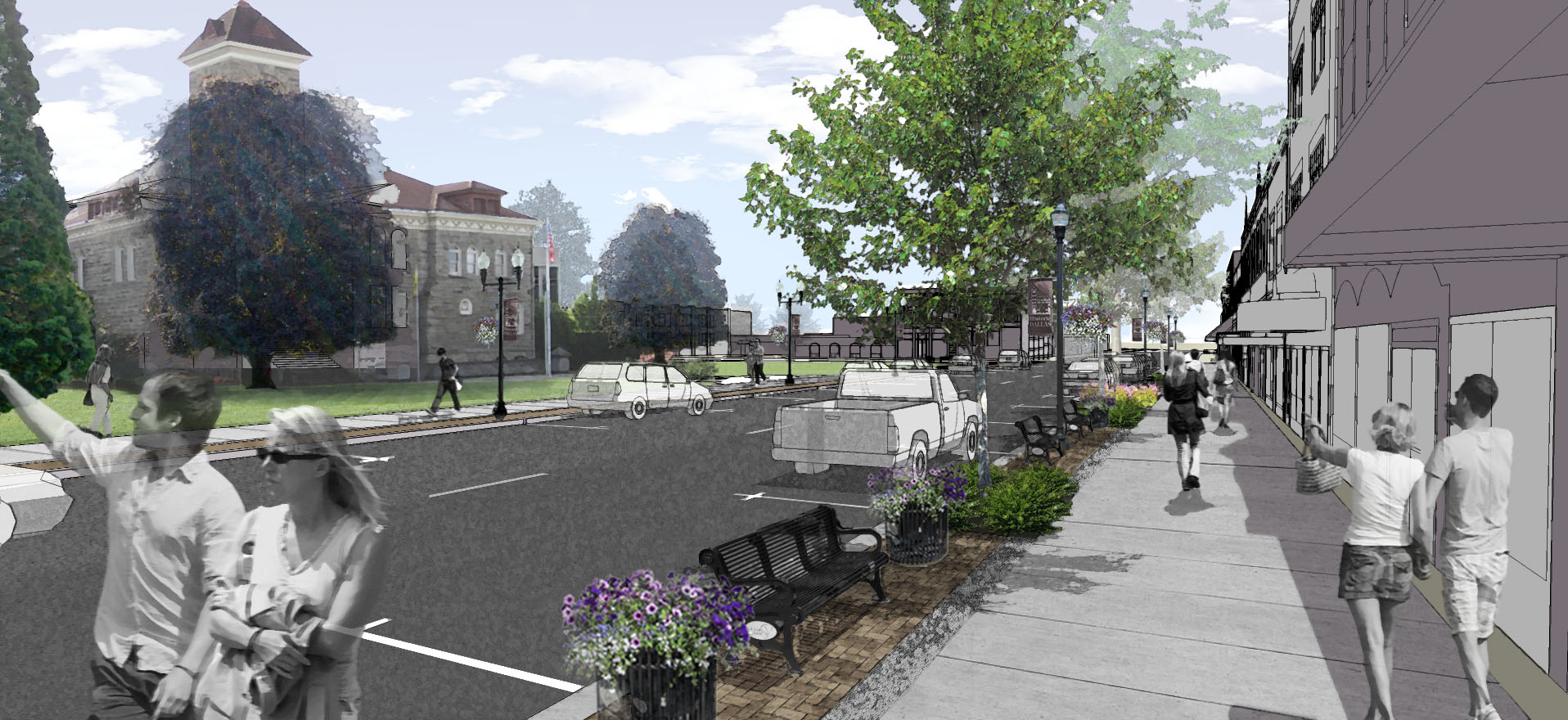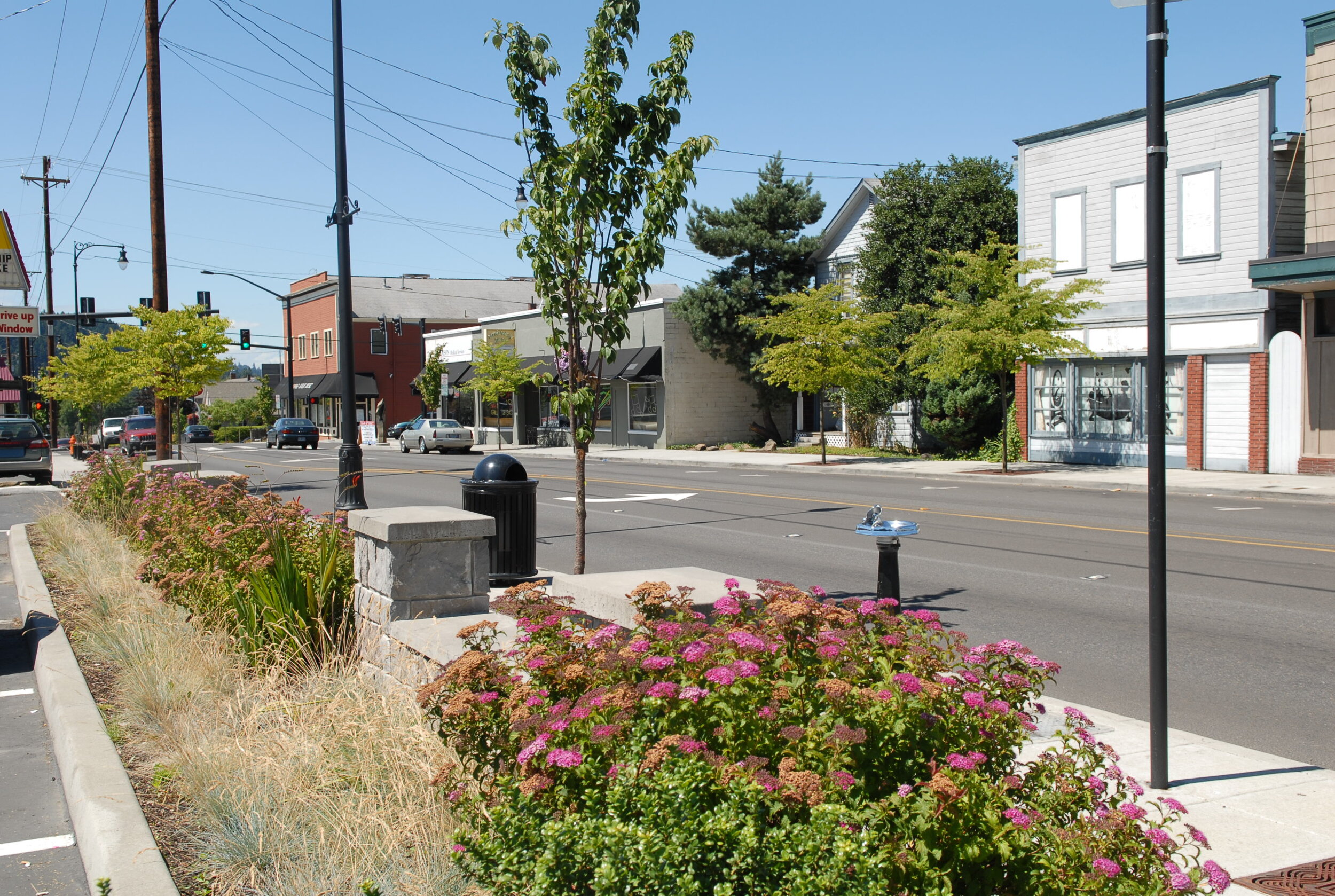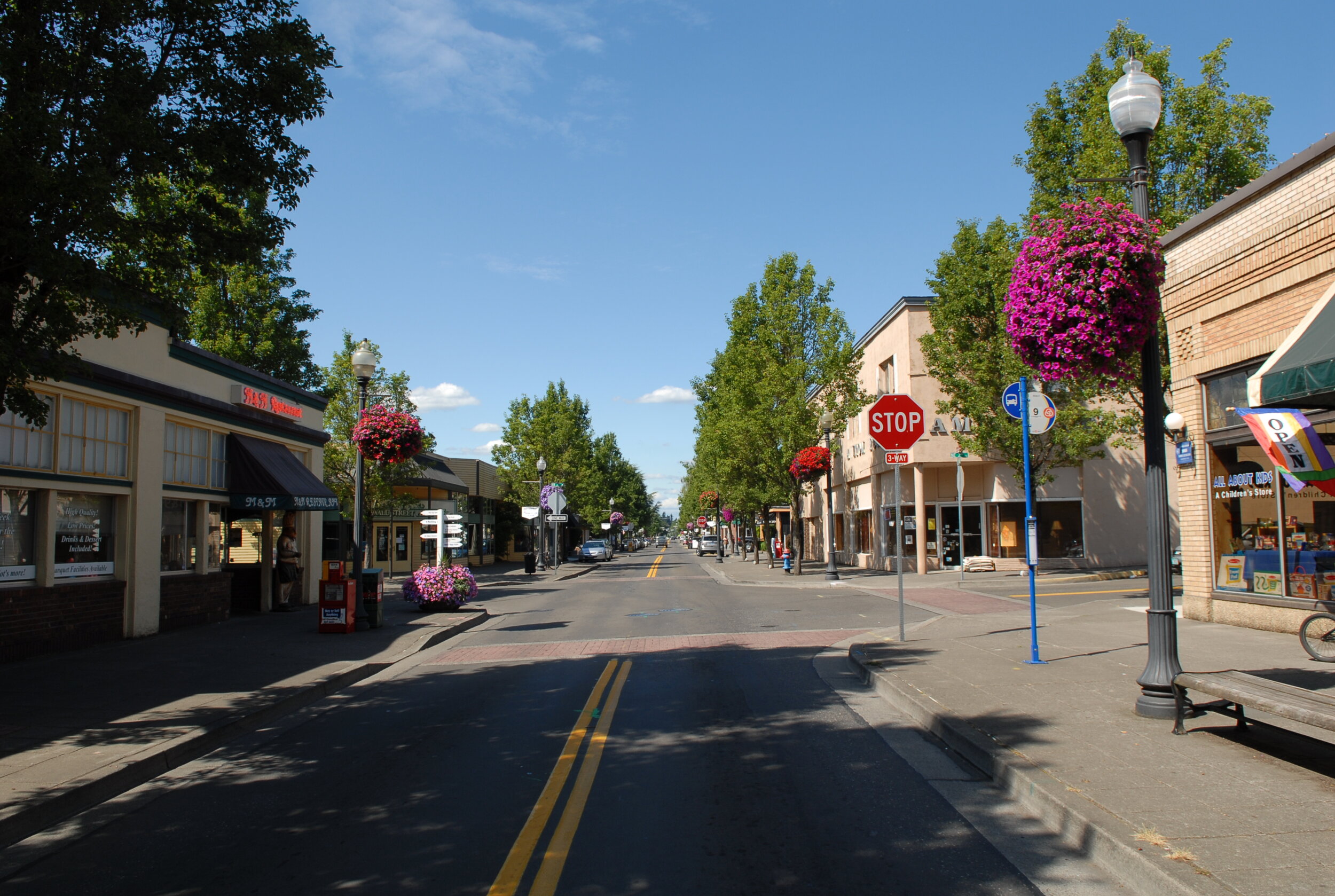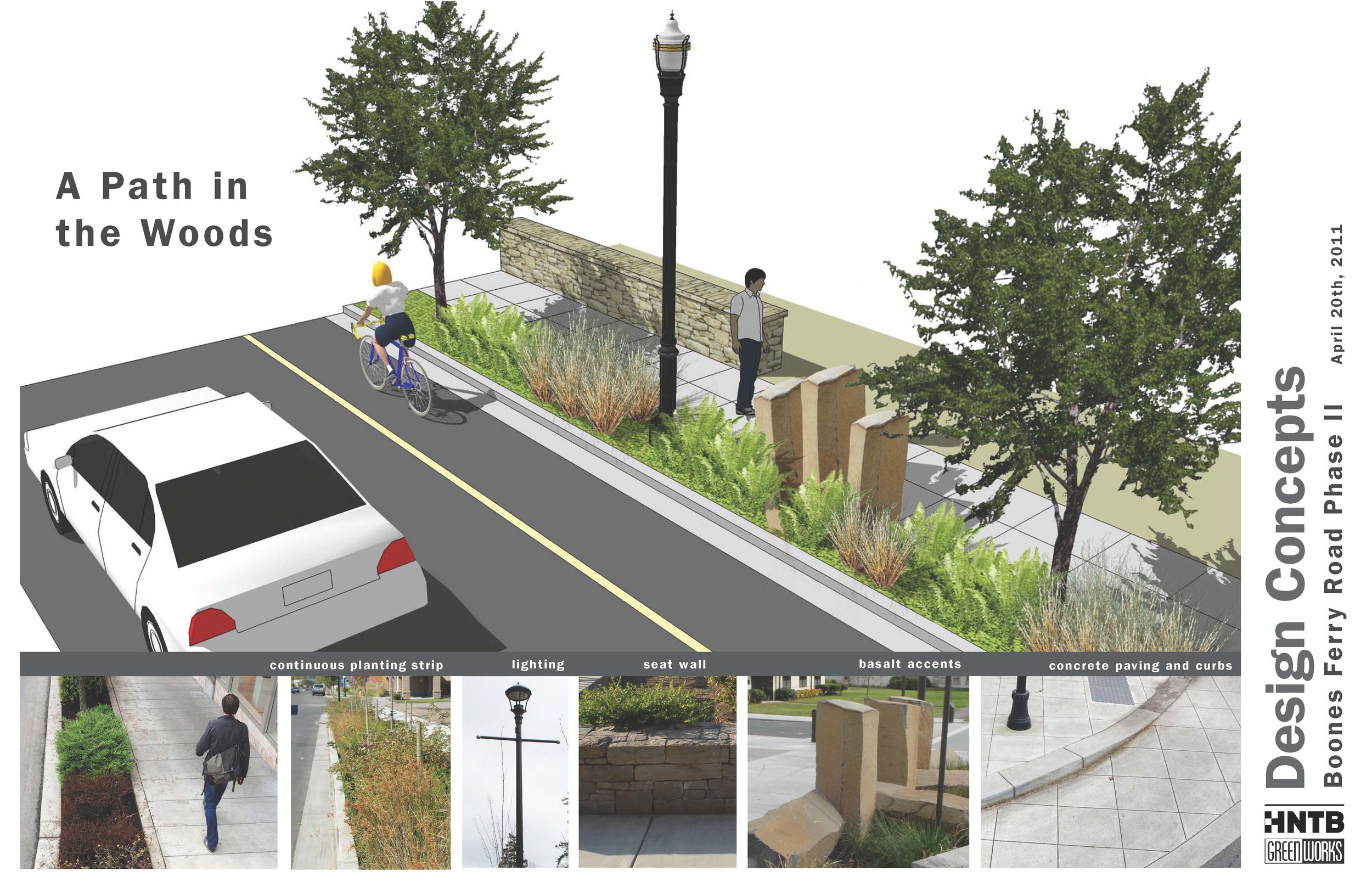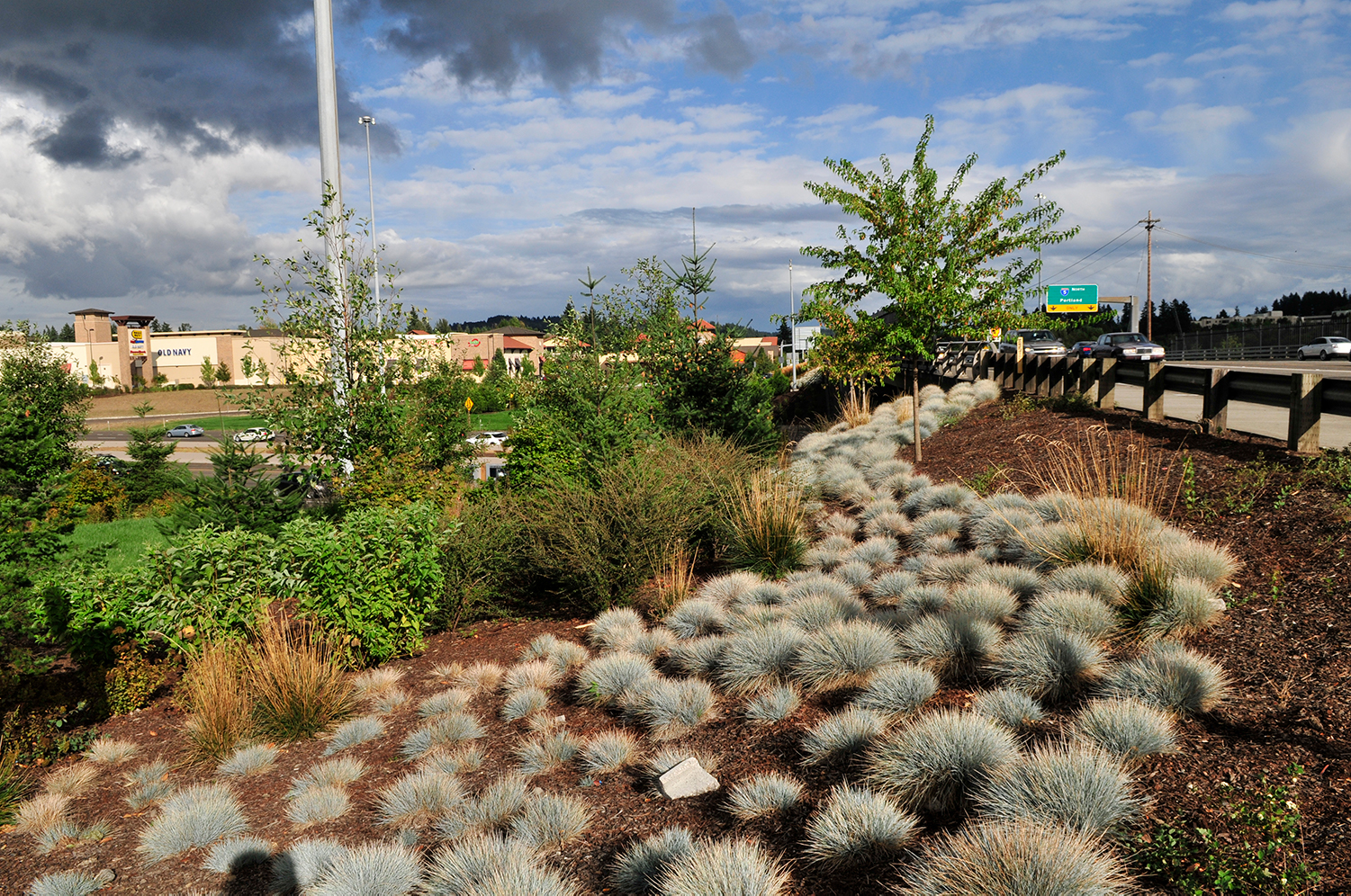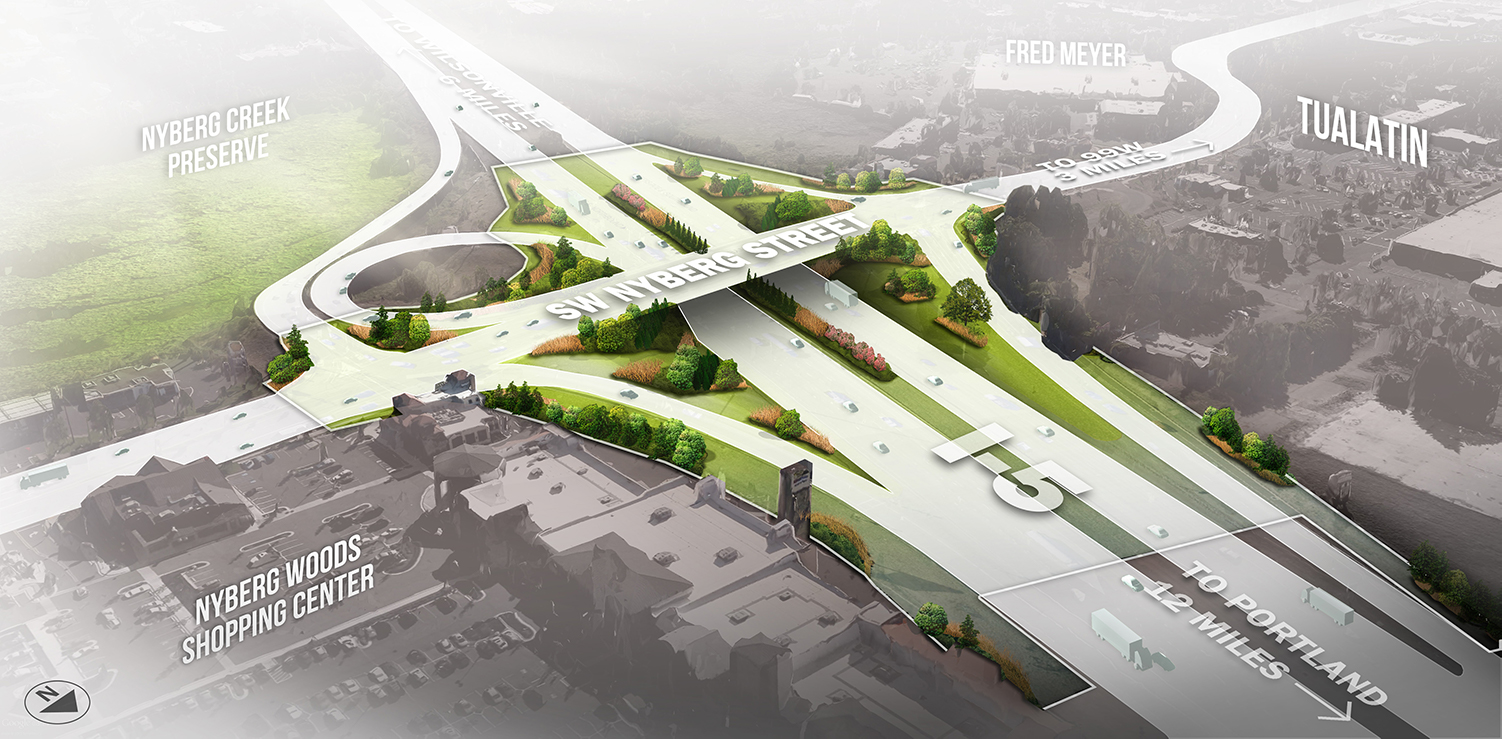Lake Oswego Demonstration Street Project
/GreenWorks closely collaborated with an engineer and urban designer to develop a prototype street reconstruction plan that emphasized a pedestrian friendly environment. Design solutions included narrowing of lane width, replacing left turn lane with landscape median, addition of a rich variety of paving materials in pedestrian zones and placement of street furniture, ornamental street lights, street trees, and annual color accent planting. Our specific responsibilities included final design and specifying of cobblestone paving in crosswalks, pre-cast concrete pavers in parking zone, patterned concrete in pedestrian and furniture zones, as well as landscaping improvements.

